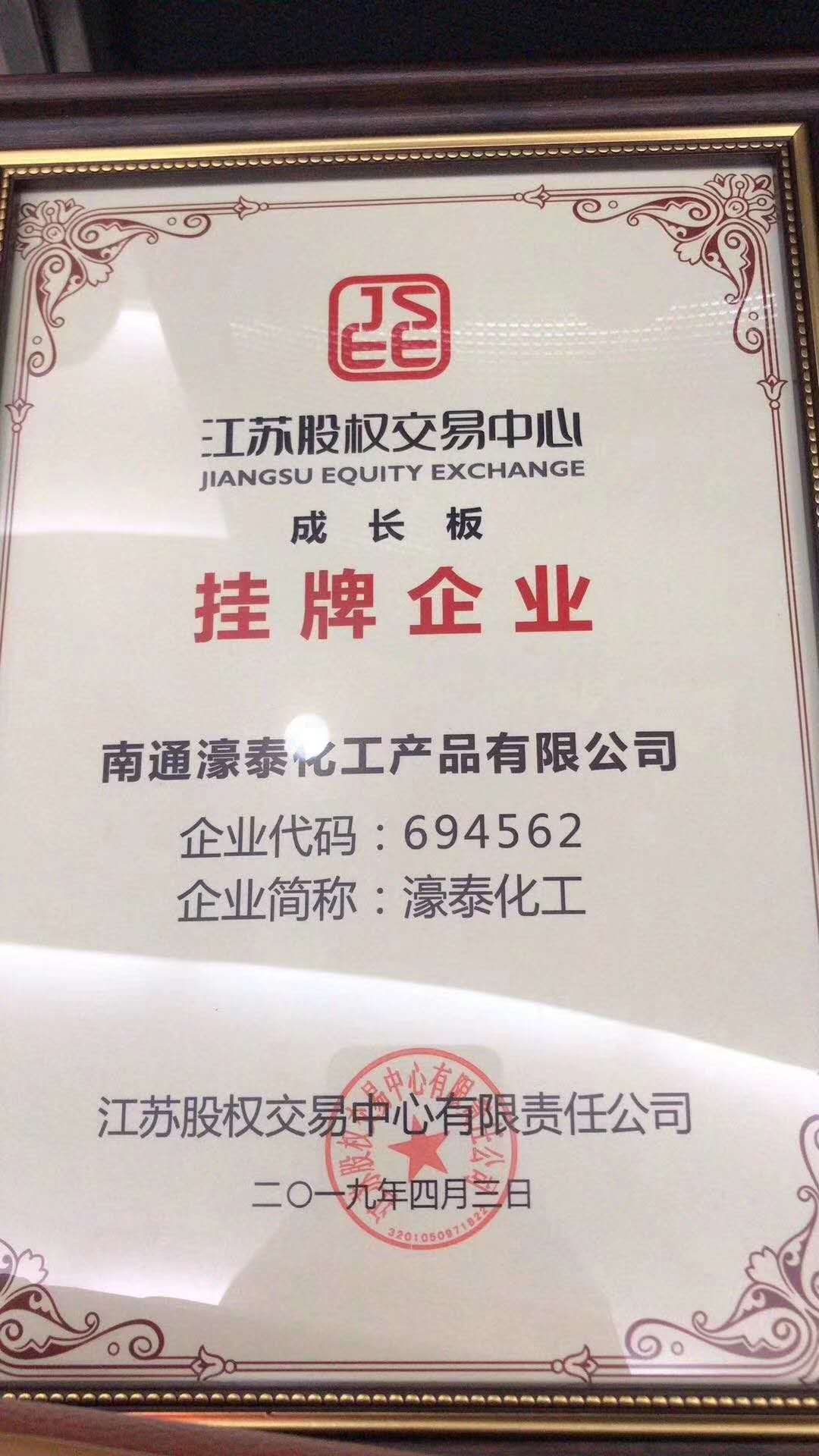Nantong Haotai Chemical Successfully Listed
2019-04-03 11:29
On April 3, 2019, Nantong Haotai Chemical Products Co., Ltd. was successfully listed! Nantong Haotai Chemical Products Co., Ltd. was successfully listed!

The Jiangsu Equity Exchange Center follows the unified requirements of the CSRC for the construction of China's multi-level capital market system,
On April 3, 2019, Nantong Haotai Chemical Products Co., Ltd. was successfully listed!
The regional equity trading market, which is only authorized and approved by the People's Government of Jiangsu Province, is unique and is the only legal platform for equity transactions of small, medium and micro enterprises in the province.
The center was established after the State Council issued the "Decision on Cleaning up and Rectifying Various Trading Places and Effectively Preventing Financial Risks" and the "Guiding Opinions on Regulating Securities Companies'Participation in Regional Equity Trading Markets (Trial)" issued by the China Securities Regulatory Commission. A regional equity trading market led by the People's Government and funded by a number of state-owned securities companies in the province. The major shareholder of the center is Huatai Securities, which holds 52% of the shares. The remaining four shareholders are Nanjing Securities, Soochow Securities, Guolian Securities, and Donghai Securities. The five shareholders have relatively rich peer resources and customer groups in the capital market. Regional equity market listed companies provide professional financial services.
Government support is strong. The implementation opinions of the Jiangsu Provincial Government on further promoting the healthy development of the capital market (Su Zhengfa [2014] No. 122), the opinions of the Jiangsu Provincial CPC Committee and the Jiangsu Provincial people's Government on improving and perfecting the Modern Market system (Su Fa [2014] No. 17), and the opinions of the Jiangsu Provincial people's Government of the Jiangsu Provincial CPC Committee on speeding up Financial Reform and Innovation (Su Fa [2014] No. 17) are all aimed at speeding up the construction of regional equity markets in Jiangsu the requirements are put forward and the relevant policy support is clarified. In the 2017 provincial financial work conference, it was further required to "improve the multi-level capital market service system, enhance the service function of the regional equity market, build and improve the unified regional equity market of the whole province with the Jiangsu equity trading center as the core, and strive to build a basic platform for the standardized development, equity financing and listing cultivation of the province's share reform enterprises."
Recommended News
Copyright © 2024 Nantong Haotai Chemical Products Co., Ltd. All Rights Reserved.



